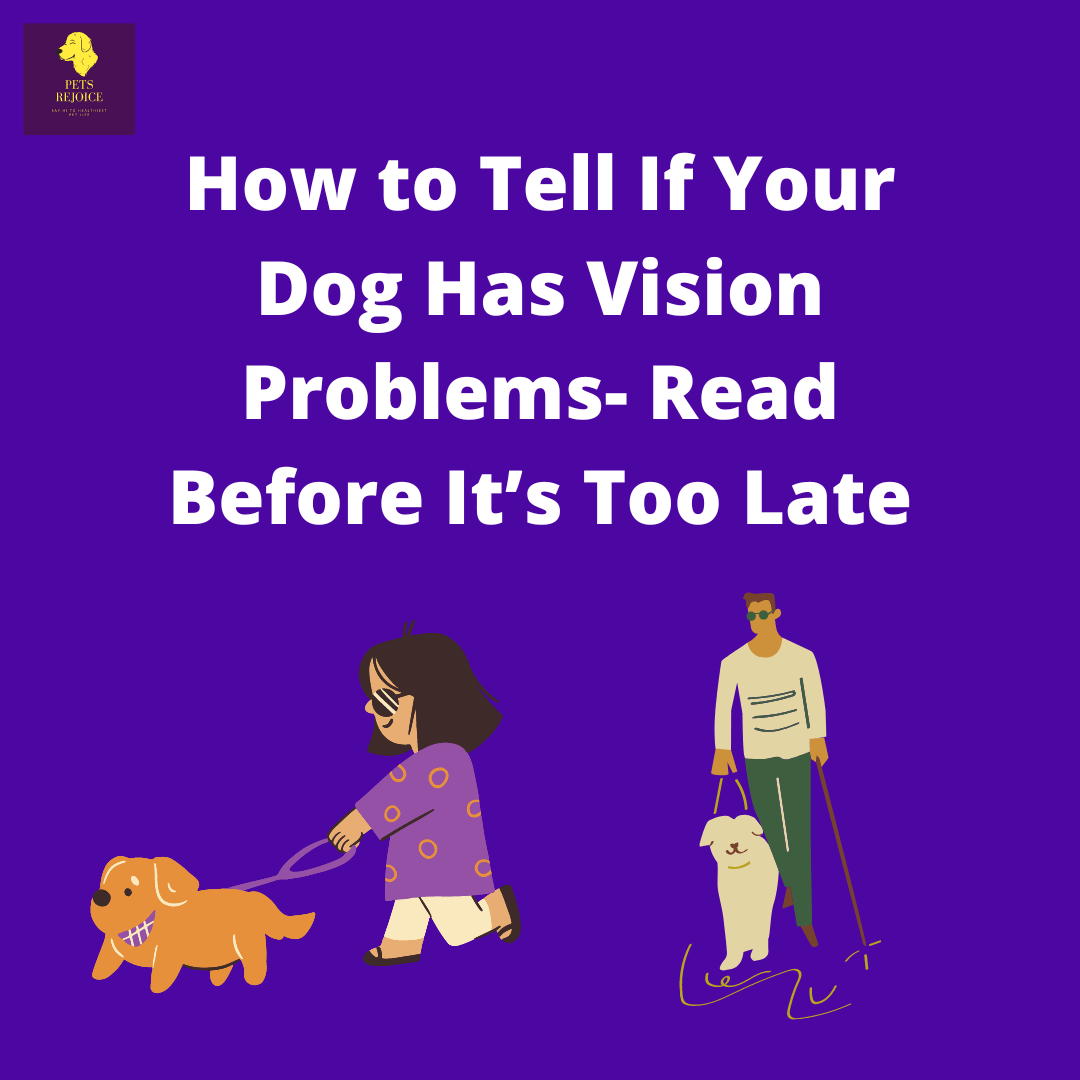Have you ever thought about how your dog enjoying the side view while sitting next to your driving seat can encounter the worst nightmare of his life? Some allergens, such as dust or sand particles, can get into your canine eyes and cause irritation, redness, and sometimes infectious diseases.
If left untreated might cause blindness. Other reasons could be genetics, ageing, accident and so on. Many reasons can lead to your canine’s vision loss. So if you are wondering how to tell if your dog has vision problems or not? No worries, we have got your back. Please read our guide to know how to avoid it until managing it.
Some Common Dog Breeds with Poor Eyesight:
The overall dog’s health plays an important role in keeping up the smooth functioning of the organs. But some dog’s breeds are more prone to lose vision or might get poor eyesight. The reason involves multiple factors, including their lifestyle, fur length, diet etc. But these are the 7 breeds that have poor eyesight. So we suggest you take extra care of these canines.
- American Cocker Spaniel
- Labrador and Golden Retrievers
- Siberian Husky
- Poodles
- Collie Breeds
- Boston Terriers
- Great Danes
Detectable Signs and Symptoms of Vision Loss:
The symptoms might vary from dog to dog depending on its breed, age, and cause of sight loss. But these are some of the common signs and symptoms that will help you detect that your dog’s eyes need some extra attention.
- Redness or swollen eyes
- One eye may look smaller than the other one.
- Blurred vision results in an aggressive attitude
- Cloudy vision end up more bumping
- Doesn’t feel comfortable going outside
- Not opening up to new adventures
- Excessive pawing at eyes
- Start avoiding stairs
- White spots on eyes
- The third eyelid appears more prominently
- Sometimes fever with puffy eyes (in case of infections)
Also Read: Senior Dog Tooth Extraction- Is it Safe or Not?
What Are The Potential Reasons For This Vision Loss?
There could be many primary and secondary reasons for ocular damage. We have listed some of the major yet common reasons to give you a slight idea of possible reasons.
Diabetes:
Approximately 70-75% of dogs get diabetes at 5 or 6. This increasing ratio is one of the main causes of vision loss in dogs.
Allergens or Irritants:
Sand or any other harmful particle can pollute your canine’s eye, resulting in swollen eyes or redness. These irritants may lead to several infections and other serious eye diseases if left untreated.
Hereditary Conditions:
Some dogs get blurred vision or poor sight from their genetics. When you are getting your dog at home, kindly check all these concerns in advance to prevent them.
- Entropion:
It is a hereditary disease in dogs with long fur. In this disease, the eyes roll inside due to excessive hair covering the eye’s surroundings. It can cause severe redness, dry cornea, and eye inflammation.
- Retina Destruction:
Sudden Acquired Retinal Degeneration Syndrome (SARDS) and Progressive Retinal Atrophy (PRA) can cause retina destruction, leading to complete blindness.
An autoimmune disease in German Shepherds due to extensive UV light exposure.
Senior Dog Eye Problems:
These diseases are restricted to old age canines, but these are mostly associated with elderly dogs. So we advise you to get these red signals to prevent bigger losses.
1. Nuclear Sclerosis | Faulty Cataracts
Most pet owners take nuclear sclerosis as cataracts, but it is not always what it looks like. The bluish haze is due to excessive fiber growing –a usual trait of older dogs. So you might see a slight blue line in the corneas. Some people mix it with cataracts thinking of it as a cloudy appearance.
2. Cataracts | Cloudy Appearance
It is not painful, but it can progress with age and cause complete vision loss. At that time, there was no other option left except surgery. So, whenever you see the whitish layer in the centre of the lens. Immediately consult the vet.
3. Glaucoma | Blindness
It occurs due to imbalance fluid production that can give a consistent pressure feel to the eyelids of your canine. The irritating behavior could be a major sign of diagnosis in this case. Moreover, you will see different primary and secondary causes of this disease. It can lead to blindness.
Is My Dog’s Impaired Sight Recoverable?
It depends on the cause of the sight loss or its impairment. If the reasons are mild such as infections or any contagious one, your dog will recover soon with the right treatment.
But if the underlying cause is untreatable or the damage is severe, you should focus on how you can make your canine life better with impaired vision.
So, Are You Managing Your Dog’s Poor Vision the Right Way?
When you are sure that your dog has impaired vision, you should make your fluffy friend comfortable and ease them to train it to live with this problem. Here are some suggestions that will help you backup your dog with this disease.
- Firstly, strictly follow your vet’s instructions.
- Please don’t ignore any symptoms, and it can make it worse.
- Never change the setting to save your dog from bumps.
- Ophthalmoscope examination is mandatory.
- Train your dog to follow your command, such as stop, especially when going outside.
- If your dog needs eye surgery, make sure you choose the certified vet.
- Avoid self-medication and don’t put any human eye drops without consulting your vet.
- Consistently ask for intraocular pressure of your dog when taken for a regular checkup. The normal range is 10 to 25 mm Hg. If it’s disturbed, monitor closely.
Can They Live Happily After Vision Impairment?
Yes. Like humans, dogs can also adjust to their downsides. But their comfort mostly depends on how you treat them. Try to make them comfortable with it by managing their surroundings and proper treatment. In the end, they will adopt their new life with modified or impaired sight.
Let us know what you found out about your dog’s impaired vision?
MORE FROM THE EXPERTS:
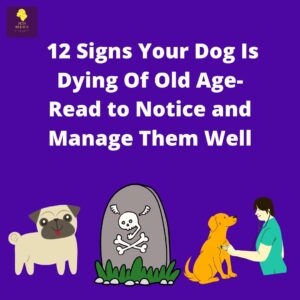 12 Signs Your Dog Is Dying Of Old Age- Read to Notice and Manage Them Well
12 Signs Your Dog Is Dying Of Old Age- Read to Notice and Manage Them Well 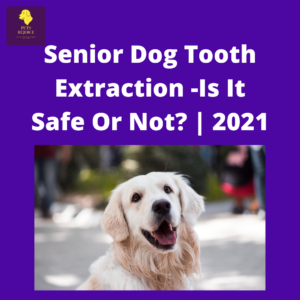 Senior Dog Tooth Extraction -Is It Safe Or Not? | 2022
Senior Dog Tooth Extraction -Is It Safe Or Not? | 2022 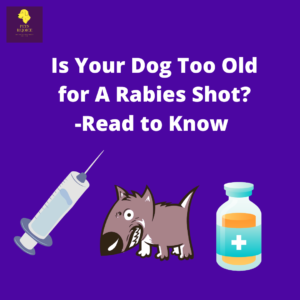 Is Your Dog Too Old for A Rabies Shot?-Read to Know
Is Your Dog Too Old for A Rabies Shot?-Read to Know  Best Self-Cleaning Slicker Brush | 4 Best-Selling Picks For You | 2022
Best Self-Cleaning Slicker Brush | 4 Best-Selling Picks For You | 2022 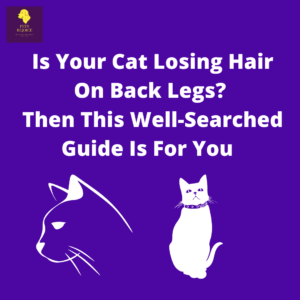 Is Your Cat Losing Hair On Back Legs? Then This Well-Searched Guide Is For You
Is Your Cat Losing Hair On Back Legs? Then This Well-Searched Guide Is For You  Best Senior Dog Food without Chicken- For Dogs Having Chicken Intolerance
Best Senior Dog Food without Chicken- For Dogs Having Chicken Intolerance  Best Small Dog Wheelchair for Back Legs | 3 Veterinarian Approved Picks-2022
Best Small Dog Wheelchair for Back Legs | 3 Veterinarian Approved Picks-2022  Dog Hiccups A Lot! Is It Pleasing or Concerning? |2023
Dog Hiccups A Lot! Is It Pleasing or Concerning? |2023